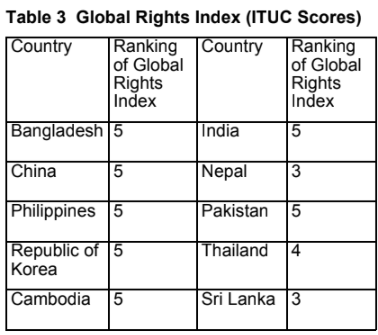What is Wrong With the Centre’s New Labour Codes

Representational image. Image Courtesy: The Hindu
The revised Industrial Relations Code Bill, 2020, was presented in Parliament on 19 September, after being revised in light of the recommendations of the Parliamentary Standing Committee on the IRC Bill 2019. The objective of the IRC Bill of 2020 is to rationalise and amalgamate three labour laws: the Trade Unions Act, 1926, the Industrial Employment (Standing Orders) Act, 1946 and the Industrial Disputes Act, 1947 and to facilitate ease of doing business “without compromising” labour welfare and benefits. It is against these that we need to evaluate the latest version of the bill.
The bill reduces the criteria for the “sole negotiating agent” from the earlier more stringent condition of 75% to 51% as in Kerala and West Bengal. It has raised the criteria for becoming a member of the Negotiating Council from 10 to 20 per cent, which theoretically means that not more than five unions can be members of a negotiating council. The latter is a harsher clause. However, this is a historic legislative measure as it has defied all sorts of governments since 1947! In other words, good things begin and end here.
Like a bolt from the blue, the 2020 bill has raised the threshold for applicability of the standing orders from 100 in 2019 (as existent in the industrial employment act) to 300 workers. As per the Annual Survey of Industries for 2017-18, around 90% of working factories and 44% of workers in them will be left completely outside the purview of the new standing orders.


To understand the potential harm this provision will do to both workers and employers, we must briefly appreciate the objective for introduction of the Industrial Employment (Standing Orders) Act or IE Act. A Standing Order is a special kind of collective contract that standardises terms and conditions of service related to different types of employment contracts and their nature (for example, probationary tenure and conditions for confirmation), conditions governing termination of employment (by employers or workers), specification of “misconduct”, “disciplinary procedure” and the types and conditions for punishment, and so on.
Before this act, the employers and employees had unequal bargaining power, as most firms did not have Standing Orders in place. They resorted to unilateral, arbitrary and discriminatory practices and similarly-placed workers. These led to industrial conflicts and inefficient and inequitable outcomes for both employers and employees. Hence the law was enacted to curb labour market opportunism and create conducive industrial relations.
It is well-established that the probability of union presence rises as the size of employment in a firm increases. Hence, union presence is less likely in the 90% of establishments that employ less than 300 workers. Then, the Bill informalises hitherto formal enterprises and workers. In other words, workers in smaller enterprises are not likely to have protection from either trade unions or laws. They will become informal and precarious workers. The duty on the employer to furnish a written contract in the Occupational Safety and Health Code (OSHC) will not be helpful, as it carries no specific penal clauses for non-compliance such as those existing in China.
Union coverage, by most generous estimates, will not be greater than 10% in the non-governmental sector in India. ILO estimated in 1997 the collective bargaining coverage in India at less than 3%, which would not have increased much given the rising incidence of contract workers and anti-union Human Resource policies pursued later. In the Industrial Disputes Act, the less stern conditions applied only to public utility services which the government had the power to notify for a short period. The 2020 bill has made the conditions for legal strikes sterner and applied them to all the establishments.
Workers cannot strike without 14 days notice, during conciliation proceedings and seven days after their conclusion, during adjudication proceedings and three months after their conclusion. Assuming super-efficiency on part of all agencies in the industrial relations system, workers will not be able to strike legally for at least 150 days (14 days’ notice+45 in conciliation+90 days of adjudication).
The industrial conflicts witnessed since early 2001 have shown the darker side of union-busting and abuse of contract labour flexibility. They might occur with greater frequency now. Contract labour employment was already higher (around 35% by ASI estimates, see below) and will increase phenomenally due to liberal clauses in the OSHC. It has liberalised contractors and principal employers employing less than fifty workers (as opposed to current 20) from contract labour regulations and virtually allowed contract labour in core activities (as a combined reading of S.57 (a) (b) (c) will show) and free employment in non-core activities. The bill allows employers to resort to employing workers on fixed-term contracts without any regulation as to their legitimacy (i.e. objective reasons like a business spike or replacement for workers on maternity benefit), minimum or maximum tenures, number of extensions, etc. Altogether, these will increase the share of non-permanent workers considerably. To top it, the government has liberalised the retrenchment and closure threshold from 100 to 300 and legalised what around ten states have done since 2014, after Rajasthan set the flexibility ball rolling. The bill has maintained the same already-low severance pay for retrenchment and closure, fifteen days of pay for every completed year of service. This miserly sum is the deadliest blow to workers by the central government when state governments that liberalised the thresholds did hike the severance pay to at least 45 days of pay. Further, the Social Security Code has not provided for unemployment insurance, even though it includes this in its definition of “social security”. Such is the drafting skills of lawmakers which will make visionary even competent lawmakers’ bodies turn in their graves.
The OSHWC has substantially raised the threshold for contract labour employment, allowed contract labour system in non-core activities and under some conditions even in core activities and the reading of the conditions would simply mean that any principal employer can legitimately employ contract workers in regular activities. Further, the Code provides that even if contractors not able to fulfil criteria for securing licences in the normal process they can secure “work-specific licences” to employ contract labour for a defined tenure as may be stipulated by the officials [see S.47(2)].
Law-making has degenerated to such low levels to afford flexibility even if the provisions are not legally tenable. This will intensify the incidence of contract labour in the factory sector, as is the case elsewhere. We see that even though an under-estimate, the official data (from the Annual Survey of Industries) shows that the share of contract labourers in the total workforce in the organised factory sector has increased from 13% in 1993-94 to 36% in 2016-17 (see Figure 1).

The dynamics within the flexible categories of employment is worth mentioning. The employers now have a bewildering variety of choices: casual, temporary, fixed-term, trainees (all directly employed by the principal employers), and contract workers apart from the earn-while-you-learn scheme workers, which illegally converts learners into workers. Employers will have little incentive to use workers who are directly employed by the principal employers, as relatively cheaper and highly dispensable employment on contract is now readily available. The biggest merit of such third-party employment is that monitoring costs, social security maintenance costs, legal compliance costs and litigation costs are shifted on to the contractor. Fixed-term employment is much costlier as well, than contact labour as the new law requires them to be paid pro-rata wages and benefits and social security including gratuity. Then there are transaction costs of recruitment and termination, etc. A pragmatic employer will either outsource or resort to contract labour system.
These are multiple blows to employment security and constitute substantial weakening of labour rights. The OSHWC and IRC together will intensify informality in the non-agricultural sector (see the Table 2 below).

Not only that, these vulnerabilities further the ongoing secular decline in relative share of wages to workers in the gross value added and enhance that of profits (see Figure 2).
Figure 2 Percentage Share of Nominal Wages and Profits in Gross Value Added in the Organised Factory Sector in India, 1981-82 to 2017-18

So now, workers, if they still have jobs, who are trapped in low labour standards, will have little recourse through legal or institutional mechanisms. The Codes are a festive gift of substantial labour flexibility and power of unilateralism, the latter even unasked-for
In sum, the bill is a disaster as on the pretext of promoting ease of doing business it will push industrial relations to the darker days of unilateralism and “fire-at-will” times that prevailed during the colonial era. It will not contribute to a conducive environment either, as a threat to labour rights and vulnerability as it has happened is a perfect recipe for industrial unrest. There is a clear tension between ease of doing business ranking even faulty and prior-driven (as admitted by the World Bank recently and suspended its exercises) and Labour Rights as measured by the International Trade Union Confederation (ITUC) (see below).
Fig. 3 EODB Ranks of India, 2011-2019 (World Bank)


Then, it does not serve Labour or Capital. Finally, we need to ask a question here: can the government insert new clauses in the bill, such as enhancing the threshold from 100 to 300 for application of regulations concerning the standing orders, which were not mentioned in the bill in 2019 or introduce “core versus non-core” operations for application of contract labour regulations, which were also not in the earlier bill and hence not discussed before the Parliamentary Standing Committee? While it is an understandable if the government errs on the side of promoting social welfare, it may not be so understandable when it does the opposite, which the two Codes on Industrial Relations and OSHWC exemplify.
The author teaches human resource management at XLRI, Jamshedpur. The views are personal.
Get the latest reports & analysis with people's perspective on Protests, movements & deep analytical videos, discussions of the current affairs in your Telegram app. Subscribe to NewsClick's Telegram channel & get Real-Time updates on stories, as they get published on our website.
























